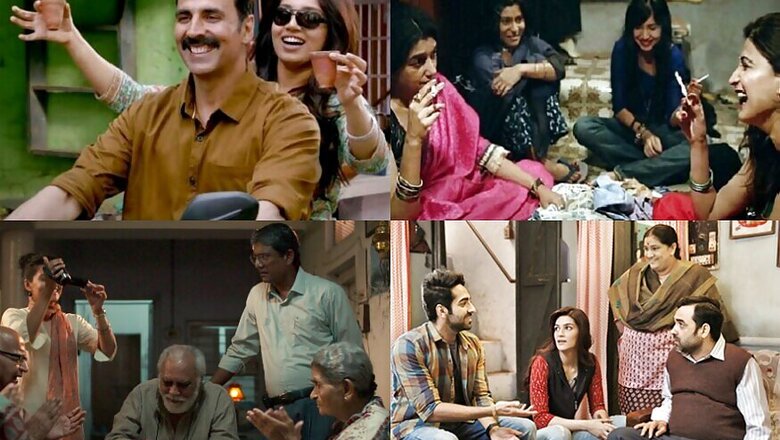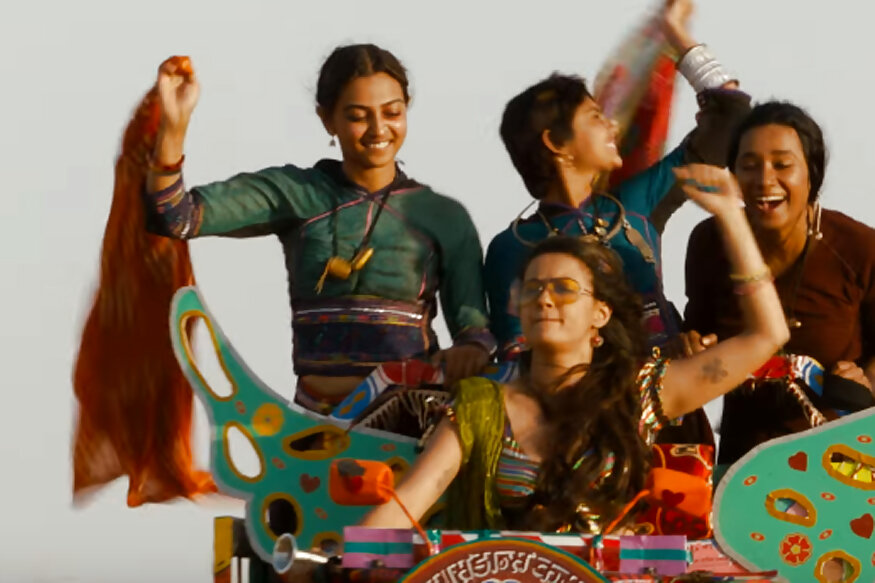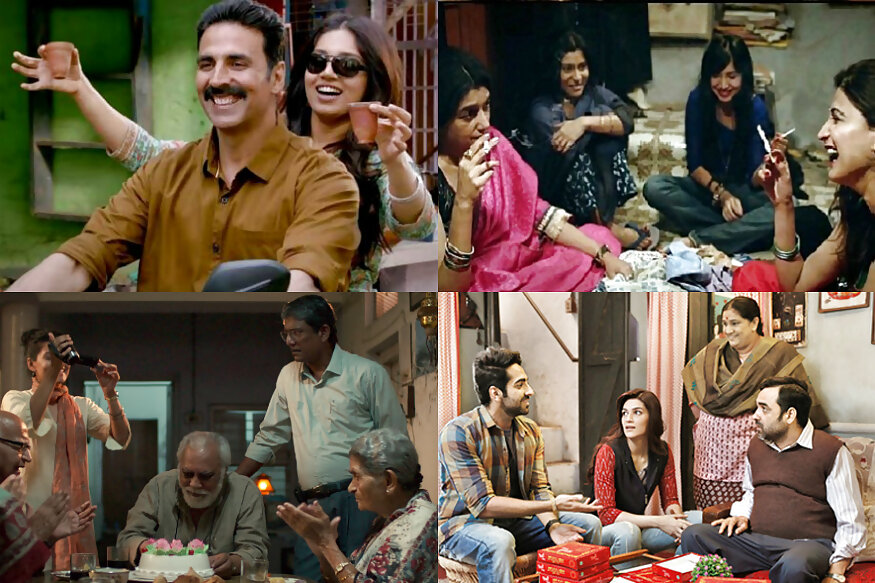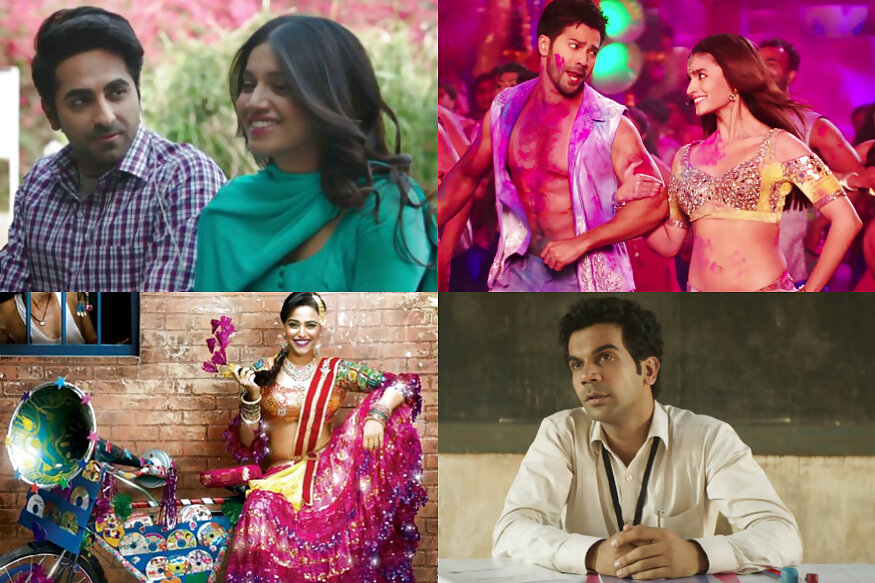
views
Back in the 90s, when cinema was a window to the outside world and a medium of escaping the grim realities as people battled with fast moving changes, the exoticism of Bollywood and its stories was at its peak. Perhaps, that’s why a Dilwale Dulhania Le Jayenge sequence across Europe left viewers longing for foreign trips and a London-returned Tina in Kuch Kuch Hota Hai seemed more amusing than a heartland Meghna in Dil Se. But that was then.
Gone are the days when Bollywood stuck to a routine idea - the rut of exotic locales, extravagant costumes and larger than life plotlines because as it turns out, the heartland stories are now leading the way in Indian cinema. The viewers, now, don’t necessarily need a cinematic eye to understand the fanciness of locales abroad, what they want and seek perhaps, are hub stories originating from the excluded corners of the country.
The year 2016 centered on the films arising straight from the lands of Harayana and Punjab - Sultan, Dangal and Udta Punjab – working wonders at the box office, and the likes of Parched, set in a desert village of Rajasthan, finding several takers both here and abroad.

The many stories set in rural milieus have always enjoyed a fair fan base but an upward graph at the box office is a recent trend on a rise. And if anything, it stands as testimony to the piqued curiosity of the viewers and acceptance, when it comes to home-grown content - not just in terms of pre-production, production and post-production techniques, but at the very core of its scriptwriting.
In fact, in the first nine months of 2017, there’s been a surprising shift in the filmmaking ideologies viz-a-viz the box office curve. The films that have potentially tugged at the viewers and made their way as winners are the ones narrating tales of either a deepening societal flaw in semi-rural areas or celluloid versions of what human intricacies in those areas look like. On the other hand, the ones that essentially boasted on grand scales resting on the shoulders of a big banner or a big star came crashing down at the box office.
The makers are now driven towards maintaining the authenticity and a rustic touch to the plot giving it more weight than the usual run-of-the-mill films.
The recently released Bareilly Ki Barfi is a fine example of how underdog aspects of the country are right at the forward of fine filmmaking. Set in Bareilly, Uttar Pradesh, the film gets most things right – the dialect, tone, authenticity, marriage stereotypes, mother’s concerns and the yearning for a more progressive society. The flavor is kept consistent as the characters indulge in ‘typical’ small town conversations mouthing the dialogues in a tuned dialect.
Toilet: Ek Prem Katha, the Akshay Kumar-Bhumi Pednekar film that has already entered the 100 crore club, is another such example. The film brought to celluloid the quandaries of village inhabitants to head to fields in the need to relieve themselves. Even though many termed the film a propaganda and a nod to PM Modi’s Swach Bharat campaign, the fact that it aimed to improve the sanitation conditions and the eradication of open defecation, primarily in rural areas, was appreciated by the audience and critics alike.
Haraamkhor, set in a North Indian village, depicted the violent predation of a manipulative, selfish married teacher when he woos an underage female student and at the same time pleads his wife to not leave him. Soon, came a refreshing tale of a righteous trader from the dry state of Gujarat, Raees, in the film of the same name. The film juxtaposed the morals of right and wrong with the current political affairs highlighting the varied scams that ruled the state.

Mukti Bhawan and Lipstick Under My Burkha dealt with starkly different ideas but both innately captured the essence of the cities – Varanasi and Bhopal – they were shot in. Benares, where the rare story dealing with death that made you smile was shot in, turned to be a character in itself. As one awaited for the 77-year-old Daya to attain salvation (mukti), one couldn’t help but admire the intricacies of the town. While Benares breathed a life of its own in Mukti Bhawan, the lipstick rebellion in Bhopal turned a benchmark, puncturing the old-age patriarchy. The film dealt with four women – aware, conscious and ready to explore their sexualities but more importantly it highlighted the existence of a mini rebel world in a rather regressive town.
Avinash Das’ Anarkali Of Aarah shed light on the concept of consent through the story of a small town erotic singer who gets groped by an impactful name. The debates on consent were sparked early on in the cities, but the troubling situation prevailing in small towns only came through with this film. Badrinath Ki Dulhania, too, tried churning out a social message under the flag name of a romantic comedy. Set in Jhansi, the film’s minuscule ways dealt with the plight of being born as a girl in a small town while the older generation yearns for a boy, the concept of equality and the tradition of dowry.

Not just these, the remaining three months of 2017 have in store for viewers, tales arriving from remote corners of the country such as the love story of a man with erectile dysfunction coloured in humorous pathos of a small town family dynamics (Shubh Mangal Savdhan), the story of the man who invented the low-cost sanitary pad making machine (Padman) and the story of a righteous polling office who aims to conduct free and fair voting at a Naxal-controlled town in the conflict-ridden jungles of Chhattisgarh (Newton).
With a positive trend of embracing the lower middle-class and rural milieus in cinema, both filmmakers and viewers, have cashed in on the growing interests within the topics affecting or making the country.














Comments
0 comment